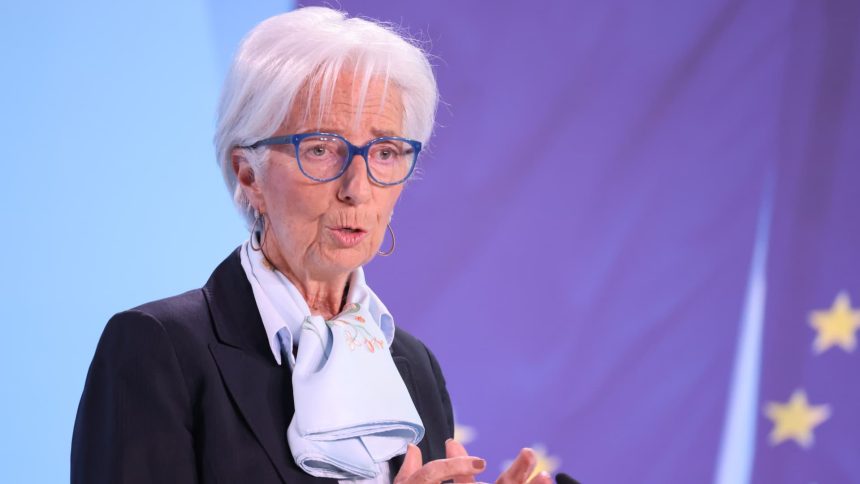European Central Bank President Christine Lagarde on Tuesday said the central bank remains on course to cut interest rates in the near term, subject to any major shocks.
Lagarde said the ECB would monitor oil prices “very closely” amid elevated fears of a spillover conflict in the Middle East. However, since Iran’s unprecedented air attack on Israel over the weekend, she said the oil price reaction had been “relatively moderate.”
Her comments come shortly after the central bank gave its clearest indication to date that it could start cutting interest rates during its June meeting.
“We are observing a disinflationary process that is moving according to our expectations,” Lagarde told CNBC’s Sara Eisen on the sidelines of the IMF Spring Meetings.
“We just need to build a bit more confidence in this disinflationary process but if it moves according to our expectations, if we don’t have a major shock in development, we are heading towards a moment where we have to moderate the restrictive monetary policy,” Lagarde said.
“As I said, subject to no development of additional shock, it will be time to moderate the restrictive monetary policy in reasonably short order,” she added.
The ECB on Thursday held interest rates steady at a record high for the fifth consecutive meeting, but signaled that cooling inflation means it could begin trimming soon.
In a shift from previous language, the ECB said “it would be appropriate” to lower its 4% deposit rate if underlying price pressures and the impact of previous rate hikes were to boost confidence that inflation is falling back toward its 2% target “in a sustained manner.”
The central bank had previously made no direct reference to loosening monetary policy in its prior communiques.
Asked whether a June rate cut might be followed by subsequent reductions, Lagarde replied, “I have been extremely clear on that and I have said deliberately we are not pre-committing to any rate path.”
“There is huge uncertainty out there … We have to be attentive to those developments, we have to look at the data, we have to draw conclusions from those data.”
Lagarde declined to comment when asked whether three ECB rate cuts this year was a reasonable expectation for market participants.
Policymakers and economists have zeroed in on June as the month when rates could start to be reduced, after the ECB trimmed its medium-term inflation forecast. Price rises in the euro zone have since cooled more than expected in March.
Asked about the central bank’s confidence in inflation continuing to fall in the wake of rising commodity prices, particularly should oil prices spike amid geopolitical tensions, Lagarde replied, “All commodity prices have an impact, and we have to be extremely attentive to those movements.”
“Clearly on energy and on food, it has a direct and rapid impact,” she added.
‘Biggest risks stem from geopolitics’
Earlier on Tuesday, ECB policymaker Olli Rehn said that the prospects for a June rate cut hinge upon inflation falling as expected, noting that the biggest risks to the ECB’s monetary policy stem from Iran-Israel tensions and the ongoing Russia-Ukraine war.
“As summer approaches we can start reducing the level of restriction in monetary policy, provided that inflation continues to fall as projected,” Rehn, who serves as the governor of the Bank of Finland, said in a statement.
“The biggest risks stem from geopolitics, both the deteriorating situation in Ukraine and the possible escalation of the Middle East conflict, with all their ramifications,” he added.
Israeli forces have pledged to respond to Iran’s large-scale air attack on Israel on Saturday. World leaders have called for the “utmost degree of restraint” in the aftermath of the weekend attack, amid fears of an escalation of the conflict in the Middle East.
Speculation that the ECB could soon start cutting rates comes even as investors have slashed their bets on Federal Reserve rate reductions. Traders now ascribe a 20% likelihood of a Fed rate cut in June, after yet another inflation print showed consumer prices remain sticky.
— CNBC’s Jenni Reid contributed to this report.
Read the full article here




